ICGOO在线商城 > 传感器,变送器 > 运动传感器 - 倾角仪 > SCA103T-D05-1
- 型号: SCA103T-D05-1
- 制造商: Murata
- 库位|库存: xxxx|xxxx
- 要求:
| 数量阶梯 | 香港交货 | 国内含税 |
| +xxxx | $xxxx | ¥xxxx |
查看当月历史价格
查看今年历史价格
SCA103T-D05-1产品简介:
ICGOO电子元器件商城为您提供SCA103T-D05-1由Murata设计生产,在icgoo商城现货销售,并且可以通过原厂、代理商等渠道进行代购。 SCA103T-D05-1价格参考。MurataSCA103T-D05-1封装/规格:运动传感器 - 倾角仪, Sensor Inclinometer ±30° X or Y Axis 8 ~ 28Hz Bandwidth 12-SMD, L-Bend。您可以下载SCA103T-D05-1参考资料、Datasheet数据手册功能说明书,资料中有SCA103T-D05-1 详细功能的应用电路图电压和使用方法及教程。
Murata Electronics North America 的 SCA103T-D05-1 是一款高性能的倾角仪,适用于多种应用场景。这款传感器主要用于测量物体的倾斜角度和姿态变化,具有高精度、低噪声和出色的温度稳定性,因此在多个行业中得到广泛应用。 1. 工业自动化 SCA103T-D05-1 可用于工业自动化设备中,如机器人、自动化生产线和物料搬运系统。它能够实时监测设备的姿态变化,确保机械臂或传送带等设备在运行过程中保持正确的角度,避免因倾斜过大导致的操作失误或设备损坏。 2. 建筑与基础设施监测 在建筑和基础设施领域,SCA103T-D05-1 可以安装在桥梁、高楼大厦或隧道等结构上,用于监测建筑物的倾斜情况。通过长期监测,可以及时发现结构变形或沉降等问题,提前采取措施,保障公共安全。 3. 农业机械 农业机械如拖拉机、收割机等在复杂地形作业时,需要精确控制其倾斜角度以确保操作安全和效率。SCA103T-D05-1 可以帮助这些机械设备实时感知自身的倾斜状态,自动调整工作参数,提高作业精度和安全性。 4. 航空航天 在航空航天领域,SCA103T-D05-1 可用于飞行器的姿态控制和导航系统中。它可以提供精确的倾斜角度数据,帮助飞行器保持稳定飞行,特别是在无人机和小型卫星等应用中,倾角仪的高精度特性尤为重要。 5. 医疗设备 某些医疗设备如手术台、康复器械等需要精确的角度控制。SCA103T-D05-1 可以确保这些设备在使用过程中始终保持正确的倾斜角度,为患者提供更安全、舒适的治疗体验。 6. 汽车电子 在汽车电子领域,SCA103T-D05-1 可用于车辆的车身稳定控制系统(ESC)和坡道辅助系统中。它能够实时检测车辆的倾斜角度,帮助车辆在斜坡上平稳启动或停车,提升驾驶安全性。 总之,SCA103T-D05-1 凭借其卓越的性能和可靠性,广泛应用于工业、建筑、农业、航空航天、医疗和汽车等多个领域,为各种应用场景提供了精准的倾斜角度测量解决方案。
| 参数 | 数值 |
| 产品目录 | |
| 描述 | INCLINOMETER SGL 0.5G DIL12 SMD测斜计 Analog 1-Axis Diff Inclinometer |
| 产品分类 | 倾斜仪运动与定位传感器 |
| 品牌 | Murata Electronics |
| 产品手册 | |
| 产品图片 |
|
| rohs | 符合RoHS无铅 / 符合限制有害物质指令(RoHS)规范要求 |
| 产品系列 | 测斜计,Murata Electronics SCA103T-D05-1- |
| 数据手册 | |
| 产品型号 | SCA103T-D05-1 |
| 产品 | Tilt Sensor |
| 产品培训模块 | http://www.digikey.cn/PTM/IndividualPTM.page?site=cn&lang=zhs&ptm=30253 |
| 产品目录页面 | |
| 产品种类 | 测斜计 |
| 其它名称 | 551-1001-2 |
| 商标 | Murata Electronics |
| 安装风格 | SMD/SMT |
| 封装 | Bulk |
| 封装/外壳 | 12-SMD, L-Bend |
| 工作角 | 30 deg |
| 工厂包装数量 | 100 |
| 带宽 | 8 ~ 28Hz |
| 接口 | SPI |
| 标准包装 | 100 |
| 测量范围 | ±30° |
| 灵敏度 | 8 V/g |
| 特色产品 | http://www.digikey.cn/product-highlights/zh/mems-sensors/52775 |
| 电容 | 20 nF |
| 系列 | SCA103T |
| 轴 | X 或 Y |
| 输出类型 | Analog / SPI |
| 额定电压 | 4.75 ~ 5.25V |


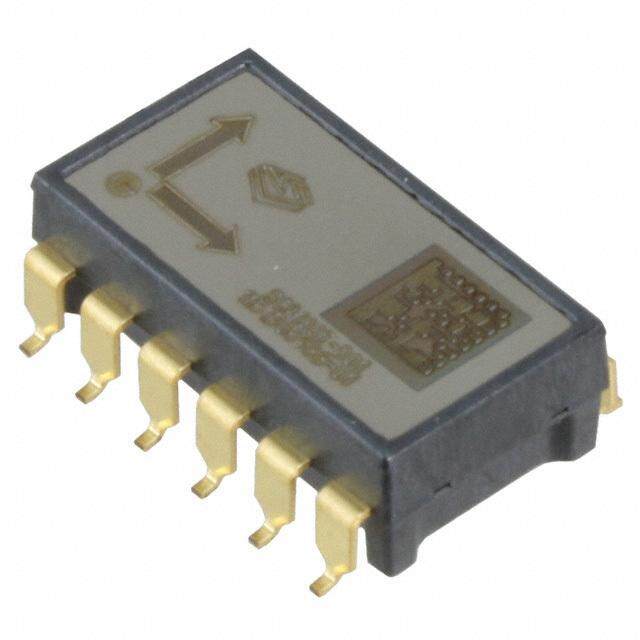
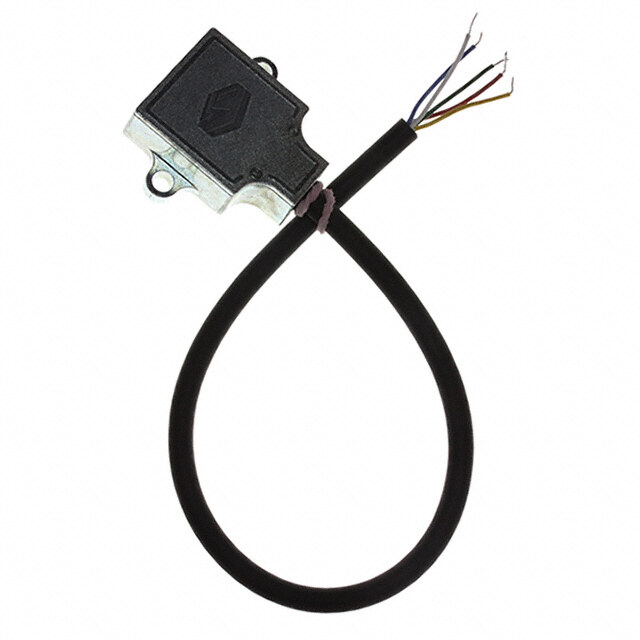

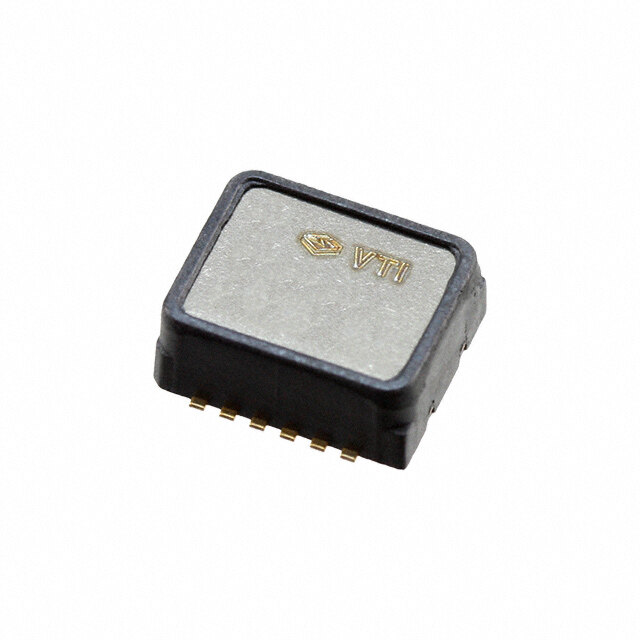


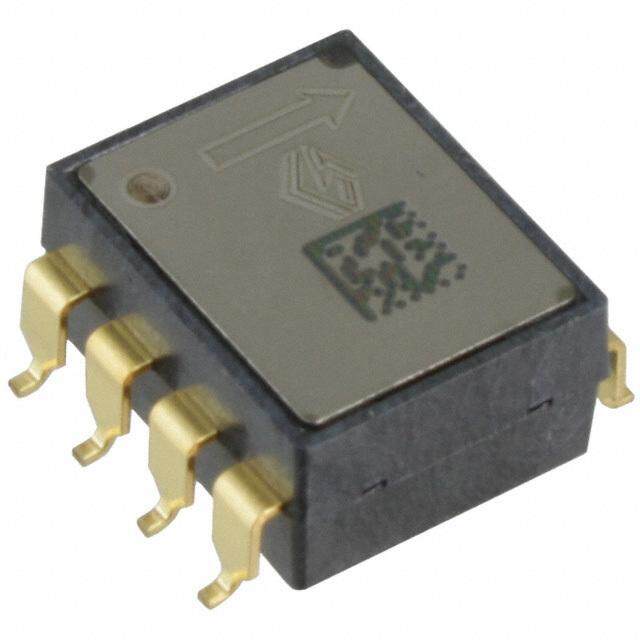

- 商务部:美国ITC正式对集成电路等产品启动337调查
- 曝三星4nm工艺存在良率问题 高通将骁龙8 Gen1或转产台积电
- 太阳诱电将投资9.5亿元在常州建新厂生产MLCC 预计2023年完工
- 英特尔发布欧洲新工厂建设计划 深化IDM 2.0 战略
- 台积电先进制程称霸业界 有大客户加持明年业绩稳了
- 达到5530亿美元!SIA预计今年全球半导体销售额将创下新高
- 英特尔拟将自动驾驶子公司Mobileye上市 估值或超500亿美元
- 三星加码芯片和SET,合并消费电子和移动部门,撤换高东真等 CEO
- 三星电子宣布重大人事变动 还合并消费电子和移动部门
- 海关总署:前11个月进口集成电路产品价值2.52万亿元 增长14.8%


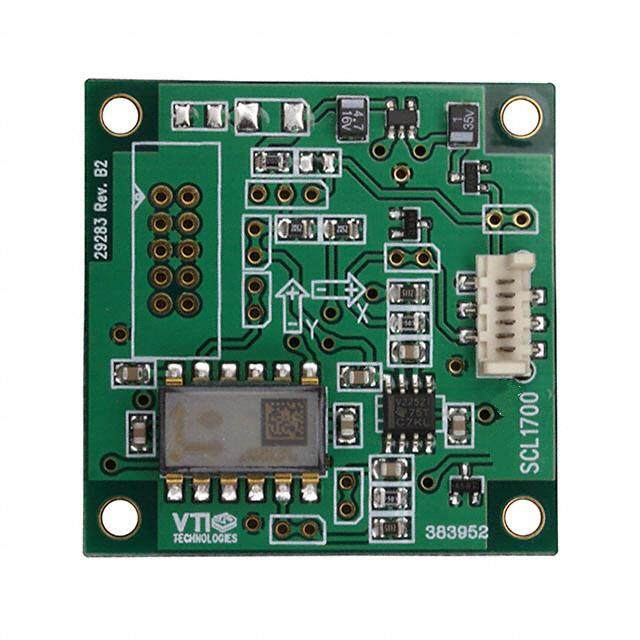
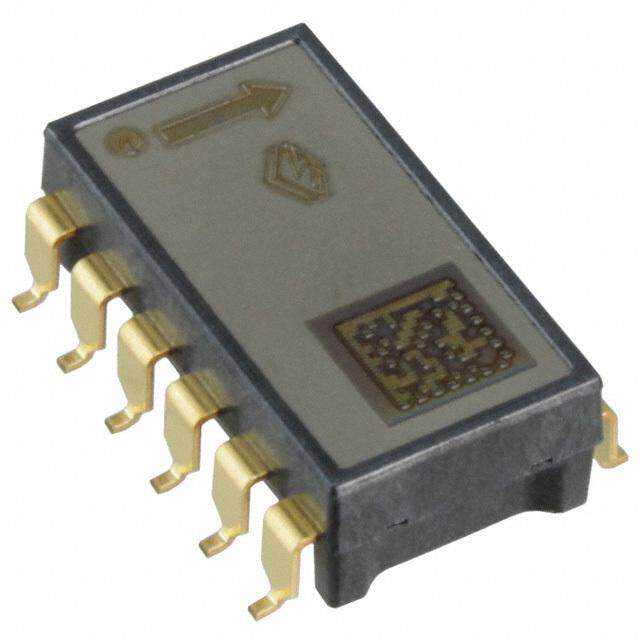




PDF Datasheet 数据手册内容提取
SCA103T Series Data Sheet THE SCA103T DIFFERENTIAL INCLINOMETER SERIES The SCA103T Series is a 3D-MEMS-based single axis inclinometer family that uses the differential measurement principle. The high calibration accuracy combines extremely low temperature dependency, high resolution and low noise together with a robust sensing element design, to make the SCA103T an ideal choice for high accuracy leveling instruments. The Murata inclinometers are insensitive to vibration due to having over damped sensing elements plus they can withstand mechanical shocks of 20000 g. Features Measuring ranges ±15° SCA103T-D04 and Ratiometric analog voltage outputs ± 30° SCA103T-D05 Digital SPI inclination and temperature output 0.001° resolution (10 Hz BW, analog output) Comprehensive failure detection features Sensing element controlled over damped o True self test by deflecting the sensing frequency response (-3dB 18Hz) elements’ proof mass by electrostatic force. Robust design, high shock durability (20000g) o Continuous sensing element interconnection Excellent stability over temperature and time failure check. Common mode error and noise reduction o Continuous memory parity check. using the differential measurement principle RoHS compliant Single +5 V supply Compatible with Pb-free reflow solder process Applications Platform leveling and stabilization Leveling instruments Rotating laser levels Construction levels 12 VDD Sensing Signal conditioning 11 OUT_1 element 1 and filtering A/D conversion 10 ST_1 Self test 1 EEPROM Temperature calibration Sensor 1 SCK memory 9 ST_2 Self test 2 3 MISO SPI interface 4 MOSI 7 CSB Sensing Signal conditioning 5 OUT_2 element 2 and filtering 6 GND Figure 1. Functional block diagram Murata Electronics Oy Subject to changes 1/17 www.muratamems.fi Doc.Nr. 8261700 Rev.A3
SCA103T Series TABLE OF CONTENTS The SCA103T Differential Inclinometer Series ....................................................................... 1 Features............................................................................................................................................. 1 Applications ...................................................................................................................................... 1 Table of Contents...................................................................................................................... 2 1 Electrical Specifications ..................................................................................................... 3 1.1 Absolute Maximum Ratings ................................................................................................... 3 1.2 Performance Characteristics .................................................................................................. 3 1.3 Electrical Characteristics ....................................................................................................... 4 1.4 SPI Interface DC Characteristics ............................................................................................ 4 1.5 SPI Interface AC Characteristics ............................................................................................ 4 1.6 SPI Interface Timing Specifications ....................................................................................... 5 1.7 Electrical Connection.............................................................................................................. 6 1.8 Typical Performance Characteristics .................................................................................... 6 1.8.1 Additional External Compensation ...................................................................................... 7 2 Functional Description ....................................................................................................... 8 2.1 Differential Measurement ....................................................................................................... 8 2.2 Voltage to Angle Conversion ................................................................................................. 9 2.3 Ratiometric Output ................................................................................................................ 10 2.4 SPI Serial Interface ................................................................................................................ 10 2.5 Digital Output to Angle Conversion ..................................................................................... 12 2.6 Self Test and Failure Detection Modes ................................................................................ 13 2.7 Temperature Measurement .................................................................................................. 14 3 Application Information .................................................................................................... 15 3.1 Recommended Circuit Diagrams and Printed Circuit Board Layouts ............................... 15 3.2 Recommended Printed Circuit Board Footprint ................................................................. 16 4 Mechanical Specifications and Reflow Soldering .......................................................... 16 4.1 Mechanical Specifications (Reference only) ....................................................................... 16 4.2 Reflow Soldering ................................................................................................................... 17 Murata Electronics Oy Subject to changes 2/17 www.muratamems.fi Doc.Nr. 8261700 Rev.A3
SCA103T Series 1 Electrical Specifications The SCA103T product family consists of two versions, the SCA103T-D04 and the SCA103T-D05, that differ in measurement range. The specific performance specifications related to each version are listed in the table “SCA103T performance characteristics” below. All other specifications are common to both versions. The supply voltage is Vdd=5.00V and ambient temperature unless otherwise specified. Parameters marked as D are valid when measured in differential mode using an external differential amplifier. Parameters marked with S are for a single measurement channel. The performance of the selected amplifier may have an effect on some parameters. The differential signal is determined as Out_diff = Out1 – Out2. 1.1 Absolute Maximum Ratings Supply voltage (VDD) -0.3 V to +5.5V Voltage at input / output pins -0.3V to (VDD + 0.3V) Storage temperature -55°C to +125°C Operating temperature -40°C to +125°C Mechanical shock Drop from 1 meter onto a concrete surface (20000g). Powered or non-powered 1.2 Performance Characteristics Parameter D/S Condition SCA103T SCA103T Units -D04 -D05 Measuring range D Nominal ±15 ±30 ° ±0.26 ±0.5 g Frequency response S –3dB LP (1 8-28 8-28 Hz Offset (Output at 0g) S Ratiometric output Vdd/2 Vdd/2 V Offset calibration error S ±0.057 ±0.11 ° Offset Digital Output S 1024 1024 LSB Sensitivity D 16 8 V/g between 0…1° (2 280 140 mV/° Sensitivity calibration error S ±0.5 ±0.5 % Sensitivity Digital Output D 6554 3277 LSB / g Offset temperature D -25…85°C (typical) ±0.002 ±0.002 °/°C dependency -40…125°C (max) ±0.29 ±0.29 ° Sensitivity temperature D -25...85°C (typical) ±0.013 ±0.013 %/°C dependency -40…125°C (max) -2.5...+1 -2.5...+1 % Typical non-linearity D Measuring range ±0.057 ±0.11 ° Digital output resolution D 12 12 Bits between 0…1° (2 0.009 0.017 ° / LSB Output noise density D From DC...100Hz 0.0004 0.0004 / Hz Analog output resolution D Bandwidth 10 Hz (3 0.0013 0.0013 ° Cross-axis sensitivity S Max. 4 4 % Ratiometric error S Vdd = 4.75...5.25V ±1 ±1 % Note 1. The frequency response is determined by the sensing element’s internal gas damping. Note 2. The angle output has SIN curve relationship to voltage output - refer to chapter 2.2 Note 3. Resolution = Noise density * √(bandwidth) Murata Electronics Oy Subject to changes 3/17 www.muratamems.fi Doc.Nr. 8261700 Rev.A3
SCA103T Series 1.3 Electrical Characteristics Parameter Condition Min. Typ Max. Units Supply voltage Vdd 4.75 5.0 5.25 V Current Vdd = 5 V; No load 4 5 mA consumption Operating -40 +125 °C temperature Analog resistive Vout to Vdd or GND 10 kOhm output load Analog capacitive Vout to Vdd or GND 20 nF output load Start-up delay Reset and parity check 10 ms 1.4 SPI Interface DC Characteristics Parameter Conditions Symbol Min Typ Max Unit Input terminal CSB Pull up current V = 0 V I 13 22 35 A IN PU Input high voltage V 4 Vdd+0.3 V IH Input low voltage V -0.3 1 V IL Hysteresis V 0.23*Vdd V HYST Input capacitance C 2 pF IN Input terminal MOSI, SCK Pull down current V = 5 V I 9 17 29 A IN PD Input high voltage V 4 Vdd+0.3 V IH Input low voltage V -0.3 1 V IL Hysteresis V 0.23*Vdd V HYST Input capacitance C 2 pF IN Output terminal MISO Output high voltage I > -1mA V Vdd- V OH 0.5 Output low voltage I < 1 mA V 0.5 V OL Tristate leakage 0 < V < I 5 100 pA MISO LEAK Vdd 1.5 SPI Interface AC Characteristics Parameter Condition Min. Typ. Max. Units Output load @500kHz 1 nF SPI clock frequency 500 kHz Internal A/D conversion time 150 s Data transfer time @500kHz 38 s Murata Electronics Oy Subject to changes 4/17 www.muratamems.fi Doc.Nr. 8261700 Rev.A3
SCA103T Series 1.6 SPI Interface Timing Specifications Parameter Conditions Symbol Min. Typ. Max. Unit Terminal CSB, SCK Time from CSB (10%) T 120 ns LS1 to SCK (90%) Time from SCK (10%) T 120 ns LS2 to CSB (90%) Terminal SCK SCK low time Load T 1 s CL capacitance at MISO < 2 nF SCK high time Load T 1 s CH capacitance at MISO < 2 nF Terminal MOSI, SCK Time from changing MOSI T 30 ns SET (10%, 90%) to SCK (90%). Data setup time Time from SCK (90%) to T 30 ns HOL changing MOSI (10%,90%). Data hold time Terminal MISO, CSB Time from CSB (10%) to stable Load T 10 100 ns VAL1 MISO (10%, 90%). capacitance at MISO < 15 pF Time from CSB (90%) to high Load T 10 100 ns LZ impedance state of capacitance at MISO. MISO < 15 pF Terminal MISO, SCK Time from SCK (10%) to stable Load T 100 ns VAL2 MISO (10%, 90%). capacitance at MISO < 15 pF Terminal CSB Time between SPI cycles, CSB at high TLH 15 s level (90%) When using SPI commands RDAX, RDAY, TLH 150 s RWTR: Time between SPI cycles, CSB at high level (90%) T T T T T LS1 CH CL LS2 LH CSB SCK THOL TSET MOSI MSB in DATA in LSB in T T T VAL1 VAL2 LZ MISO MSB out DATA out LSB out Figure 2. Timing diagram for SPI communication Murata Electronics Oy Subject to changes 5/17 www.muratamems.fi Doc.Nr. 8261700 Rev.A3
SCA103T Series 1.7 Electrical Connection If the SPI interface is not used SCK (pin1), MISO (pin3), MOSI (pin4) and CSB (pin7) must be left floating. Self-test can be activated applying logic “1” (positive supply voltage level) to ST_1 or ST_2 pins (pins 10 or 9). Self-test must not be activated for both channels at the same time. If the ST feature is not used, pins 9 and 10 must be left floating or connected to GND. Inclination signals are provided from pins OUT_1 and OUT_2. SSCCKK 1 12 VVDDDD Ext_C_1 2 11 OOUUTT_1_1 MMISIOSO 3 10 STS_T1_/1T est_in MMOOSSI I 4 9 STS_T2_2 OOUUTT__22 5 8 Ex t_C_2 GNVDS S 6 7 CCSBSB Figure 3. SCA103T electrical connection No. Node I/O Description 1 SCK Input Serial clock 2 NC Input No connect, left floating 3 MISO Output Master in slave out; data output 4 MOSI Input Master out slave in; data input 5 Out_2 Output Output 2 (Ch 2) 6 GND Supply Ground 7 CSB Input Chip select (active low) 8 NC Input No connect, left floating 9 ST_2 Input Self test input for Ch 2 10 ST_1 Input Self test input for Ch 1 11 Out_1 Output Output 1(Ch 1) 12 VDD Supply Positive supply voltage (+5V DC) 1.8 Typical Performance Characteristics Typical offset and sensitivity temperature dependencies of SCA103T are presented in following diagrams. These results represent the typical performance of SCA103T components. The mean value and 3 sigma limits (mean ± 3 standard deviation) and specification limits are presented in following diagrams. The 3 sigma limits represents 99.73% of the SCA103T population. Murata Electronics Oy Subject to changes 6/17 www.muratamems.fi Doc.Nr. 8261700 Rev.A3
SCA103T Series temperature dependency of SCA103T offset (differential output) 0.3 specification limit 0.2 s] e e egr 0.1 d or [ et err 0 a+v3e Sraiggmea s off -3 Sigma ntial -0.1 e er Diff -0.2 -0.3 specification limit -40 -20 0 20 40 60 80 100 120 Temp [°C] Figure 4. Typical temperature dependency of SCA103T offset Temperature dependency of SCA103T sensitivity [%] (differential output) 1.5 1 %] 0.5 specification error [ 0 limit vity -0.5 average ensiti -1 +-33 SSigigmmaa s al enti -1.5 er Diff -2 -2.5 specification limit -3 -40 -20 0 20 40 60 80 100 120 Temp [°C] Figure 5. Typical temperature dependency of SCA103T sensitivity 1.8.1 Additional External Compensation To achieve the best possible accuracy, the temperature measurement information and typical temperature dependency curve can be used for SCA103T sensitivity temperature dependency compensation. The offset temperature dependency curves do not have any significant tendency so there is no need for any additional external compensation for offset. By using an additional 3rd order polynome compensation curve based on average sensitivity temperature dependency curve and temperature measurement information, it is possible to reduce sensitivity temperature dependency from 0.013%/°C down to 0.005%/°C. The equation for the fitted 3rd order polynome curve is: Scorr 0.0000005*T3 0.00005*T2 0.0032*T 0.031 Where: Scorr: 3rd order polynome fitted to average sensitivity temperature dependency curve T temperature in °C (Refer to paragraph 2.7- Temperature Measurement) Murata Electronics Oy Subject to changes 7/17 www.muratamems.fi Doc.Nr. 8261700 Rev.A3
SCA103T Series The calculated compensation curve can be used to compensate for the temperature dependency of the SCA103T sensitivity by using following equation: SENScompSENS*(1Scorr/100) Where: SENScomp temperature compensated sensitivity SENS Nominal sensitivity (16V/g SCA103T-D04, 8V/g SCA103T-D05) The typical sensitivity temperature dependency after 3rd order compensation is shown in the figure below. The temperature dependency of 3rd order compensated SCA103T sensitivity [%] (differential output) 1 0.8 0.6 %] erential sensitivity error [ --0000....42240 ca+-3ov3 me SSrpiagigegmmneasa a lilmitmeitdit Diff -0.6 -0.8 -1 -40 -20 0 20 40 60 80 Temp [°C] Figure 6. The temperature dependency of 3rd order compensated SCA103T sensitivity 2 Functional Description 2.1 Differential Measurement The measuring axis of SCA103T sensing elements are mutually opposite in direction, thus providing two inclination signals which can be differentiated externally, either by using a differential amplifier or a microcontroller. The differential measurement principle removes all common mode measurement errors. Most of the error sources have similar effects on both sensing elements. These errors are removed from measurement result during signal differentiation. The differential measurement principle gives very efficient noise reduction, improved long term stability and extremely low temperature dependency. Murata Electronics Oy Subject to changes 8/17 www.muratamems.fi Doc.Nr. 8261700 Rev.A3
SCA103T Series Typical output characteristics (Channels 1, 2 and differential output: OUT1-OUT2) are presented in the figure below. For differential amplifier connection refer to the recommended circuit diagram. SCA103T-D04 outputs and differential amplifier output 6.0 5.0 4.0 3.0 2.0 SCA103T OUT_1 V] 1.0 ut [ 0.0 SCA103T OUT_2 p Out -1.0 Differential output -2.0 -3.0 -4.0 -5.0 -6.0 -20 -15 -10 -5 0 5 10 15 20 2 Tilt angle [ ° ] Figure 7. Differential output characteristics 2.2 Voltage to Angle Conversion The analo1g output behavior of the SCA103T is described in the figure below. The arrow represents the measuring axis direction marking on the top of SCA103T package. D Earth's gravity OUT1 < OUT1 =2.5V < OUT1 OUT2 > OUT2 =2.5V > OUT2 DIFF < DIFF =0 V <DIFF Figure 8. Behavior of the analog output The analog output can be transferred to angle by using the following equation for conversion: V Offset arcsin Dout Sensitivity where Offset is the output of the device at 0° inclination position, Sensitivity is the sensitivity of the device and V is the output of differential amplifier. Dout In the case of differential amplifier connection shown in the chapter Recommended circuit diagram the nominal offset output is 0 V and the sensitivity is 16 V/g with SCA103T-D04 and 8 V/g with SCA103T-D05. Murata Electronics Oy Subject to changes 9/17 www.muratamems.fi Doc.Nr. 8261700 Rev.A3
SCA103T Series Angles close to 0° inclination can be estimated quite accurately with straight line conversion but for best possible accuracy arcsine conversion is recommended to be used. Following table shows the angle measurement error if straight line conversion is used. Straight line conversion equation: V Offset Dout Sensitivity Where: Sensitivity = 280mV/° with SCA103T-D04 or Sensitivity= 140mV/° with SCA103T-D05 Tilt angle [°] Straight line conversion error [°] 0 0 1 0.0027 2 0.0058 3 0.0094 4 0.0140 5 0.0198 10 0.0787 15 0.2185 30 1.668 2.3 Ratiometric Output Ratiometric output means that the zero offset point and sensitivity of the sensor are proportional to the supply voltage. If the SCA103T supply voltage is fluctuating, the SCA103T output will also vary. When the same reference voltage for both the SCA103T sensor and the measuring part (A/D- converter) is used, the error caused by reference voltage variation is automatically compensated. 2.4 SPI Serial Interface A Serial Peripheral Interface (SPI) system consists of one master device and one or more slave devices. The master is defined as a microcontroller providing the SPI clock and the slave as any integrated circuit receiving the SPI clock from the master. The ASIC in Murata Electronics’ products always operates as a slave device in master-slave operation mode. The SPI has a 4-wire synchronous serial interface. Data communication is enabled with a low active Slave Select or Chip Select wire (CSB). Data is transmitted by a 3-wire interface consisting of wires for serial data input (MOSI), serial data output (MISO) and serial clock (SCK). MASTER MICROCONTROLLER SLAVE DATA OUT (MOSI) SI DATA IN (MISO) SO SERIAL CLOCK (SCK) SCK SS0 CS SS1 SI SS2 SO SS3 SCK CS SI SO SCK CS SI SO SCK CS Figure 9. Typical SPI connection Murata Electronics Oy Subject to changes 10/17 www.muratamems.fi Doc.Nr. 8261700 Rev.A3
SCA103T Series The SPI interface in Murata products is designed to support any micro controller that uses SPI bus. Communication can be carried out by software or hardware based SPI. Please note that in the case of hardware based SPI, the received acceleration data is 11 bits. The data transfer uses the following 4-wire interface: MOSI master out slave in µP → SCA103T MISO master in slave out SCA103T → µP SCK serial clock µP → SCA103T CSB chip select (low active) µP → SCA103T Each transmission starts with a falling edge of CSB and ends with the rising edge. During transmission, commands and data are controlled by SCK and CSB according to the following rules: commands and data are shifted; MSB first, LSB last each output data/status bits are shifted out on the falling edge of SCK (MISO line) each bit is sampled on the rising edge of SCK (MOSI line) after the device is selected with the falling edge of CSB, an 8-bit command is received. The command defines the operations to be performed the rising edge of CSB ends all data transfer and resets internal counter and command register if an invalid command is received, no data is shifted into the chip and the MISO remains in high impedance state until the falling edge of CSB. This reinitializes the serial communication. data transfer to MOSI continues immediately after receiving the command in all cases where data is to be written to SCA103T’s internal registers data transfer out from MISO starts with the falling edge of SCK immediately after the last bit of the SPI command is sampled in on the rising edge of SCK maximum SPI clock frequency is 500kHz maximum data transfer speed for RDAX and RDAY is 5300 samples per sec / channel SPI command can be either an individual command or a combination of command and data. In the case of combined command and data, the input data follows uninterruptedly the SPI command and the output data is shifted out in parallel with the input data. The SPI interface uses an 8-bit instruction (or command) register. The list of commands is given in Table below. Command Command Description: name format MEAS 00000000 Measure mode (normal operation mode after power on) RWTR 00001000 Read temperature data register STX 00001110 Activate Self test for X-channel STY 00001111 Activate Self test for Y-channel RDAX 00010000 Read X-channel acceleration RDAY 00010001 Read Y-channel acceleration Measure mode (MEAS) is the standard operation mode after power-up. During normal operation, MEAS command is the exit command from Self test. Read temperature data register (RWTR) reads the temperature data register during normal operation without effecting the operation. Temperature data register is updated every 150 µs. The load operation is disabled whenever the CSB signal is low, hence CSB must stay high at least 150 µs prior to the RWTR command in order to guarantee correct data. The data transfer is presented in figure 10 below. The data is transferred MSB first. In normal operation, it does not matter what data is written into temperature data register during the RWTR command and hence writing all zeros is recommended. Murata Electronics Oy Subject to changes 11/17 www.muratamems.fi Doc.Nr. 8261700 Rev.A3
SCA103T Series Figure 10. Command and 8 bit temperature data transmission over the SPI Self test for X-channel (STX) activates the self test function for the X-channel (Channel 1). The internal charge pump is activated and a high voltage is applied to the X-channel acceleration sensor element electrode. This causes the electrostatic force that deflects the beam of the sensing element and simulates the acceleration to the positive direction. The self-test is de-activated by giving the MEAS command. The self test function must not be activated for both channels at the same time. Self test for Y-channel (STY) activates the self test function for the Y-channel (Channel 2). The internal charge pump is activated and a high voltage is applied to the Y-channel acceleration sensor element electrode. Read X-channel acceleration (RDAX) accesses the AD converted X-channel (Channel 1) acceleration signal stored in acceleration data register X. Read Y-channel acceleration (RDAY) accesses the AD converted Y-channel (Channel 2) acceleration signal stored in acceleration data register Y. During normal operation, acceleration data registers are reloaded every 150 µs. The load operation is disabled whenever the CSB signal is low, hence CSB must stay high at least 150 µs prior to the RDAX command in order to guarantee correct data. Data output is an 11-bit digital word that is fed out MSB first and LSB last. Figure 11. Command and 11 bit acceleration data transmission over the SPI 2.5 Digital Output to Angle Conversion The acceleration measurement results in RDAX and RDAY data registers are in 11 bit digital word format. The data range is from 0 to 2048. The nominal content of RDAX and RDAY data registers in zero angle position are: Binary: 100 0000 0000 Decimal: 1024 Murata Electronics Oy Subject to changes 12/17 www.muratamems.fi Doc.Nr. 8261700 Rev.A3
SCA103T Series To obtain the differential digital output value, Dout, RDAY must be subtracted from RDAX. Dout = RDAX – RDAY The transfer function from differential digital output to angle can be presented as D LSB D LSB arcsin out out@0 Sens LSB/g where; D differential digital output (RDAX – RDAY) out D digital offset value, nominal value = 0 in differential mode out@0° angle Sens sensitivity of the device. (SCA103T-D04: 6554, SCA103T-D05: 3277) As an example, the following table contains SCA103T-D04 data register values and calculated differential digital output values with -5, -1 0, 1 and 5 degree tilt angles. Angle Acceleration RDAX RDAY DOUT [°] [mg] (RDAX–RDAY) -5 -87.16 dec: 739 dec: 1309 dec: -570 bin: 010 1110 0011 bin: 101 0001 1101 -1 -17.45 dec: 967 dec: 1081 dec: -144 bin: 011 1100 0111 bin: 100 0011 1001 0 0 dec: 1024 dec: 1024 dec: 0 bin: 100 0000 0000 bin: 100 0000 0000 1 17.45 dec: 1081 dec: 967 dec: 114 bin: 100 0011 1001 bin: 011 1100 0111 5 87.16 dec: 1309 dec: 739 dec: 570 bin: 101 0001 1101 bin: 010 1110 0011 2.6 Self Test and Failure Detection Modes To ensure reliable measurement results, the SCA103T has continuous interconnection failure and calibration memory validity detection. A detected failure forces the output signal close to power supply ground or VDD level, outside the normal output range. The normal output ranges are: analog 0.25-4.75 V (@Vdd=5V) and SPI 102...1945 counts. The calibration memory validity is verified by continuously running parity checks for the control register memory content. In a case where a parity error is detected the control register is automatically re-loaded from the EEPROM. If a new parity error is detected after re-loading data both analog output voltages are forced to go close to ground level (<0.25 V) and SPI outputs goes below 102 counts. The SCA103T also includes a separate self test mode. The true self test simulates acceleration, or deceleration, using an electrostatic force. The electrostatic force simulates acceleration that is high enough to deflect the proof mass to its extreme positive position, and this causes the output signal to go to the maximum value. The self test function is activated either by a separate on-off command on the self test input, or through the SPI. The self-test generates an electrostatic force, deflecting the sensing element’s proof mass, thus checking the complete signal path. The true self test performs following checks: Sensing element movement check ASIC signal path check PCB signal path check Murata Electronics Oy Subject to changes 13/17 www.muratamems.fi Doc.Nr. 8261700 Rev.A3
SCA103T Series Micro controller A/D and signal path check The created deflection can be seen both in the SPI and analogue output. The self test function is activated digitally by a STX or STY command, and de-activated by a MEAS command. Self test can be also activated applying logic”1” (positive supply voltage level) to ST pins (pins 9 & 10) of SCA103T. The self test Input high voltage level is 4 – Vdd+0.3 V and input low voltage level is 0.3 – 1 V. The self test function must not be activated for both channels at the same time. 5 V ST pin voltage 0 V 5V V1 V2 V3 Vout T1 T2 T3 0 V T5 T4 Figure 12. Self test wave forms Self test characteristics: T1 [ms] T2 [ms] T3 [ms] T4 [ms] T5 [ms] V2: V3: 20-100 Typ. 25 Typ. 30 Typ. 55 Typ. 15 Min 0.95*VDD 0.95*V1-1.05*V1 (4.75V @Vdd=5V) V1 = initial output voltage before the self test function is activated. V2 = output voltage during the self test function. V3 = output voltage after the self test function has been de-activated and after stabilization time Please note that the error band specified for V3 is to guarantee that the output is within 5% of the initial value after the specified stabilization time. After a longer time (max. 1 second) V1=V3. T1 = Pulse length for Self test activation T2 = Saturation delay T3 = Recovery time T4 = Stabilization time =T2+T3 T5 = Rise time during self test 2.7 Temperature Measurement The SCA103T has an internal temperature sensor, which is used for internal offset compensation. The temperature information is also available for additional external compensation. The temperature sensor can be accessed via the SPI interface and the temperature reading is an 8-bit word (0…255). The transfer function is expressed by the following formula: Cou nts197 T 1.083 Where: Counts Temperature reading T Temperature in °C The temperature measurement output is not calibrated. The internal temperature compensation routine uses relative results where absolute accuracy is not needed. If the temperature measurement results are used for additional external compensation then one point calibration in the system level is needed to remove the offset. With external one point calibration the accuracy of the temperature measurement is about ±1 °C. Murata Electronics Oy Subject to changes 14/17 www.muratamems.fi Doc.Nr. 8261700 Rev.A3
SCA103T Series 3 Application Information 3.1 Recommended Circuit Diagrams and Printed Circuit Board Layouts The SCA103T should be powered from well regulated 5 V DC power supply. Coupling of digital noise to power supply line should be minimized. A 100nF filtering capacitor between VDD pin 12 and GND plane must be used. The SCA103T has ratiometric output. To achieve the best performance use the same reference voltage for both the SCA103T and Analog/Digital converter. Use low pass RC filters with 5.11 kΩ and 10nF on the SCA103T outputs to minimize clock noise. Locate the 100nF power supply filtering capacitor close to VDD pin 12. Use as short a trace length as possible. Connect the other end of capacitor directly to the ground plane. Connect the GND pin 6 to underlying ground plane. Use as wide ground and power supply planes as possible. Avoid narrow power supply or GND connection strips on PCB. External instrumentation amplifier connection example is shown below. Figure 13. Differential amplifier connection and layout example The recommended connection example for SPI connection is shown below. Figure 14. SPI connection example Murata Electronics Oy Subject to changes 15/17 www.muratamems.fi Doc.Nr. 8261700 Rev.A3
SCA103T Series 3.2 Recommended Printed Circuit Board Footprint Figure 15. Recommended PCB footprint 4 Mechanical Specifications and Reflow Soldering 4.1 Mechanical Specifications (Reference only) Lead frame material: Copper Plating: Nickel followed by Gold Solderability: JEDEC standard: JESD22-B102-C RoHS compliance: RoHS compliant lead-free component. Co-planarity error 0.1mm max. The part weights <1.2 g Figure 16. Mechanical dimensions of the SCA103T. (Dimensions in mm) Murata Electronics Oy Subject to changes 16/17 www.muratamems.fi Doc.Nr. 8261700 Rev.A3
SCA103T Series 4.2 Reflow Soldering The SCA103T is suitable for Sn-Pb eutectic and Pb-free soldering process and mounting with normal SMD pick-and-place equipment. Figure 17. Recommended SCA103T body temperature profile during reflow soldering. Ref. IPC/JEDEC J-STD-020B. Profile feature Sn-Pb Eutectic Pb-free Assembly Assembly Average ramp-up rate (T to T ) 3°C/second max. 3°C/second max. L P Preheat - Temperature min (T ) 100°C 150°C smin - Temperature max (T ) 150°C 200°C smax - Time (min to max) (ts) 60-120 seconds 60-180 seconds Tsmax to T, Ramp up rate 3°C/second max Time maintained above: - Temperature (T) 183°C 217°C L - Time (t) 60-150 seconds 60-150 seconds L Peak temperature (T ) 240 +0/-5°C 250 +0/-5°C P Time within 5°C of actual Peak Temperature (T ) 10-30 seconds 20-40 seconds P Ramp-down rate 6°C/second max 6°C/second max Time 25° to Peak temperature 6 minutes max 8 minutes max The Moisture Sensitivity Level of the part is 3 according to the IPC/JEDEC J-STD-020B. The part should be delivered in a dry pack. The manufacturing floor time (out of bag) in the customer’s end is 168 hours. Notes: Preheating time and temperatures according to solder paste manufacturer. It is important that the part is parallel to the PCB plane and that there is no angular alignment error from intended measuring direction during the assembly process. Wave soldering is not recommended. Ultrasonic cleaning is not allowed. The sensing element may be damaged by an ultrasonic cleaning process. Murata Electronics Oy Subject to changes 17/17 www.muratamems.fi Doc.Nr. 8261700 Rev.A3

 Datasheet下载
Datasheet下载
